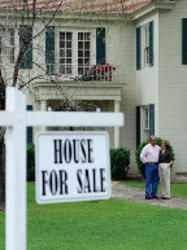Realtor Fee Rip Off -- Why 6 Percent?

An article written by Mark S. Nadel, a government attorney, concludes that "residential real estate brokers and salespersons have long quoted their fees as a straight percentage of a home's sales price. This traditional forumla, however, ill serves the interests of both home buyers and sellers, and is the primary reason why such fees may be inflated by, on average, more than 100 percent or $30 BILLION a year."
There is intense competition in the real estate industry, but not in terms of price or fees. In his article, Nadel compares the real estate industry's "flat fee" "take it or leave it" practices to those of the funeral industry, as exposed in the 1963 book "The American Way of Death," which found that families were regularly ask to pay a single price for a bundle of funeral services, many of which they did not need or want.
Nadel charges that consumers would be substantially better off if residential brokers used fee structures similar to those used by professionals in other advisory/consulting service fields, such as law and accounting.
Nadel's Cry...Consumers Take Action:
Traditional brokers revenue could be cut by $30 billion dollars per year with price competition. To level the field and insist upon true price competition, consumers should be armed with the following 5 pieces of information.
1. Buyers should receive an estimate of the dollar amount of the fee that their broker expects to receive in a home-sale transaction.
2. Buyers should be told whether their broker's agent may refuse to inform them about homes that meet their criteria, if those homes are not listed by traditional brokers.
3. Buyers should be advised that fees paid to a buyer's broker can be treated as part of the sales price for mortgage purposes.
4. Sellers should be informed that many buyers have no broker, that others have brokers who have agreed to receive less than the customary 3 percent buyer broker co-op fee, and that both groups of buyers expect to be able to translate that savings into a price reduction.
5. Sellers should be told whether their listing broker will attempt to limit the distribution of their listing by competing brokers.
In conclusion, the traditional 6 percent rate structure in the real estate industry has serious drawbacks and the structure is not defensible. 6 percent fee's provide an incentive for a broker to sell quickly because their fee is based on the sales price, rather than on the time, effort and marketing dollars required to sell the home. Buyers and Sellers owe it to themselves to learn all the information before they hire a real estate broker.

